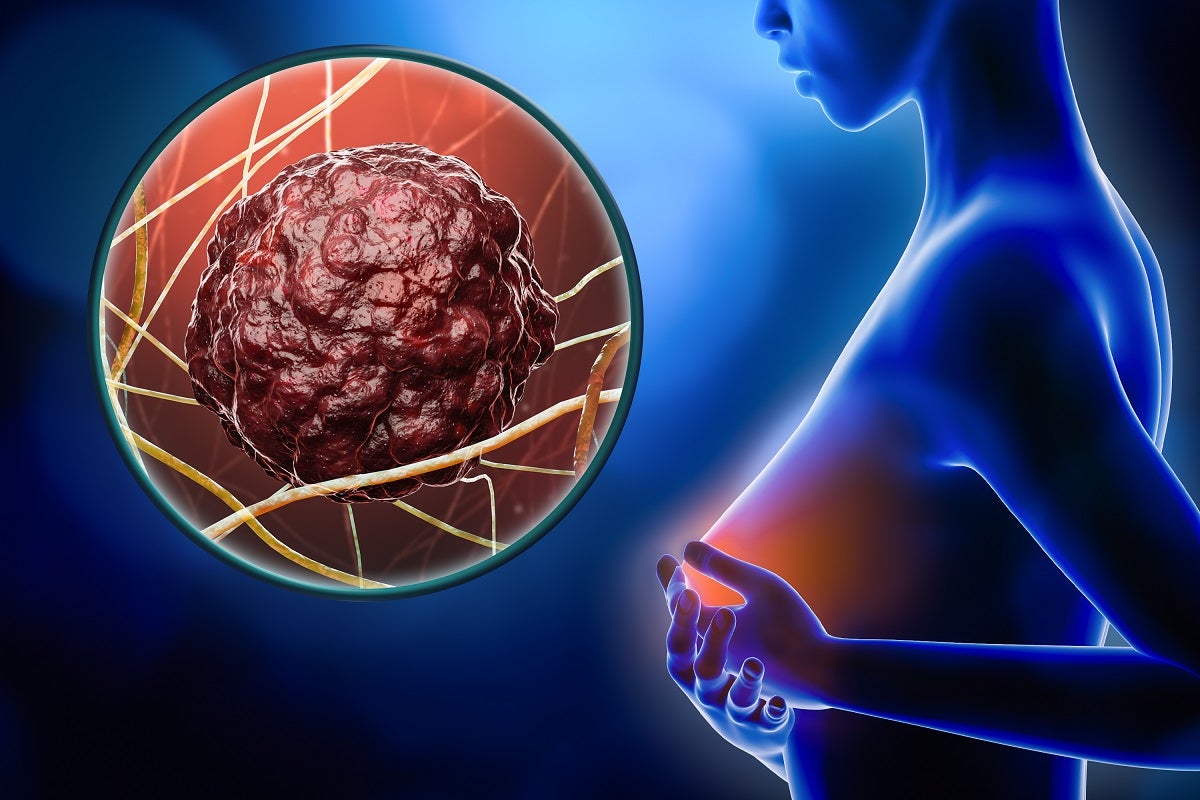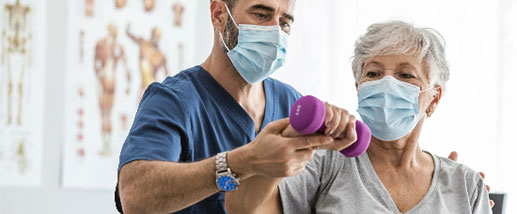Breast Cancer: Symptoms and Risk Factors
October 8, 2023
By: Val Enti
Categories: Cancer, Health & Wellness, Women's Health
Breast cancer occurs when cells within the breast grow unchecked. This often — though not always — results in a mass or tumor of the breast. Both men and women have breast tissue and are at risk of developing breast cancer, although it is far more common in women.
Eighty percent of breast cancers begin in the milk ducts and are called invasive ductal carcinoma. However, there are many types of breast cancer that may develop in any part of the nipple and breast tissue, including the glandular tissue.
Symptoms
While mammograms are veery effective for catching early breast cancers, many breast cancers are still discovered when a clinical professional or a patient feels a new lump in the breast. For that reason, many physicians recommend that young women “get to know their breasts” by beginning self-exams at an early age. This means becoming familiar with the “feeling” of the tissues throughout the breast and noting changes when they occur.
Symptoms of breast cancer can vary. Sometimes they are felt by the patient and other times, they are visible when examining the breast in a mirror. Typically, breast cancer does not hurt. Common signs of breast cancer include the following:
- An overall change in the size or shape of the breast, sometimes best seen in a mirror.
- A lump or thick tissue in the breast or armpit that feels different from the nearby tissue.
- A nipple that is inverted (points inward).
- A nipple that is crusty, flaking or peeling. The areola (colored area around the nipple) may also have changed.
- A nipple that has secretions.
- Skin that looks like an orange but is red or pitted; skin that is dimpled.
It is important to remember that not all lumps are cancerous. Breasts can have cysts or masses that may raise concern for a cancer, but ultimately be nothing to worry about. Always check with a breast specialist if you have a concern.
Risk Factors
Vigilance is important because the causes of breast cancer are not fully understood. Researchers agree that lifestyle, environmental, genetic, and hormonal factors contribute to the likelihood of a woman developing cancer.
Keep in mind that risk factors are not necessarily causes. They are conditions or traits that are associated with breast cancer. Please note that some risk factors are within your control, and some are not.
Risk factors include:
- Being female. Women are much more likely than men to develop breast cancer.
- Personal history of benign breast conditions, including dense breasts. If you've had a breast biopsy that found lobular carcinoma in situ (LCIS) or atypical hyperplasia of the breast, you have an increased risk of breast cancer. Dense breasts also increase your risk.
- Personal history of breast cancer. The chances of a second breast cancer developing have decreased in recent years due to anti-hormone medications. The risk of your initial breast cancer coming back is higher than risk of a new breast cancer.
- Family history of breast cancer: If your mother, sister, or daughter was diagnosed with breast cancer, particularly at a young age, you are two to three times more likely to develop breast cancer. Still, the majority of people diagnosed with breast cancer have no family history of the disease. Doctors estimate that about 5-10% of breast cancers are linked to gene mutations passed through families.
- Inherited genes: Mutated genes related to breast cancer can be passed from parents to children. BRCA1, BRCA2, and PALB2 are genes that greatly increase your risk of certain cancers, including breast cancer. However, if you have these genes, it doesn’t make cancer inevitable. Genetic testing, genetic counseling, and risk assessment are services available at most comprehensive breast centers.
- Early period (menstruation) or late menopause: If you began your period before age 12 or began menopause after age 50, your risk is higher.
- Oral birth control: Taking birth control pills slightly increases your risk for breast cancer and may slightly decrease your risk of ovarian cancer.
- Age at first pregnancy or no pregnancy: Women who have never been pregnant or given birth to their first child after age 30 may have an increased risk of breast cancer.
- Postmenopausal hormone therapy: Women often take HRT (hormone replacement therapy) that combines estrogen and progesterone to treat menopause. These medications increase the risk of breast cancer, but the risk decreases about three to five years after she stops taking HRT.
- Obesity or unhealthy weight: Being overweight increases the estrogen level in the body, and for this reason, these two conditions are associated with developing breast cancer. Overweight: a BMI (body mass index) of 25 or more. Obesity: a BMI of 30 or more. The chance of cancer returning is greater for overweight and obese patients.
- Drinking alcohol: To reduce this risk, limit alcohol consumption to one drink per day.
- Radiation exposure: According to the Mayo Clinic, if you received radiation treatments — for acne, for an enlarged thymus gland, or to your chest as a child or young adult — your risk of breast cancer is increased.
Remember: Take control. It’s your body.
Because women do not have control over many risk factors for breast cancer, it is important to focus on the factors you can control.
Maintaining a healthy lifestyle that includes a Mediterranean diet and regular exercise can go a long way toward your overall health.
If you are at average risk of developing breast cancer, these are three more ways you can take control of and advocate for your health:
- Keep track of any breast changes.
- Begin mammography screening at age 40.
- Know your risks and your family history.
Above all, ask questions.
Learn about Trinity Health’s Breast Care services.



